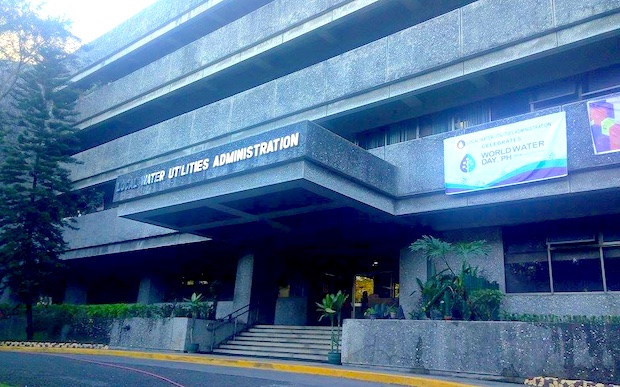LWUA must merge water districts for efficiency during El Niño – Salceda

Facade of Local Water Utilities Administration. (Photo from the Facebook page of LWUA)
MANILA, Philippines — The Local Water Utilities Administration (LWUA) must consolidate local water districts to ensure efficiency in their operations, especially with an El Niño season looming, Albay 2nd District Rep. Joey Salceda said on Monday.
Salceda, chairperson of the House of Representatives’ Committee on Ways and Means, said that the LWUA must be more aggressive in “exercising its power to monitor local water districts for performance and to consolidate them for public welfare.”
“An effective LWUA is critical to dealing with the water crisis because they supervise the hundreds of water districts that provide for urban and suburban populations outside Mega Manila,” Salceda said.
“Their mandates are far-reaching and include monitoring for performance and ‘to effect system integration, joint investment and operations district annexation, and de-annexation whenever economically warranted,’ as the law says. They also have financing powers – so they can incentivize consolidation through favorable financing terms and performance reviews,” he added.
LWUA is the primary government agency tasked with establishing standards for local water districts outside of Metro Manila. But as of now, Salceda believes around 300 water districts across the country are either non-operational or barely operational — which indicates that these water districts would not have functioning central water systems.
Article continues after this advertisementIf poorly-operating water districts are combined, Salceda claims the government can save money as investments on infrastructure would be more efficient.
Article continues after this advertisement“You could combine those water districts into clusters to make infrastructure investments more efficient,” he said.
“The thing with water is that it is infrastructure-intensive. It requires a lot of fixed costs, and it is only viable with enough revenue-paying users. So, if a water district is too small, or has too little demand, it’s doomed to fail – or will never mature to provide sanitation services, which are also expensive,” he added.
During the active phase of the El Niño-Southern Oscillation (ENSO), the average sea surface temperatures in the central and eastern equatorial Pacific Ocean are expected to rise, causing dry spells and droughts in countries like the Philippines.
The Philippine Atmospheric, Geophysical and Astronomical Services Administration (Pagasa) has not declared the presence of an active El Niño but said last March 24 that there was a 55 percent chance of it being declared between July to September 2023.
But just last Tuesday, Pagasa said that the probability of an El Niño between June to September had risen to 80 percent.
“The new LWUA administrator, Vince Revil, means well. I support his efforts to conduct a national water inventory and the P20 billion Patubig sa Buong Bayan at Mamamayan project. But to ensure that operations and management of new water systems are efficient, we really need to consolidate water districts that are inefficient or non-operational,” he said.
“I call on the administrator to exercise that agency’s mandate to hold water districts to account more,” he added.
Similarly, Salceda said the Department of the Interior and Local Government and the country’s economic managers should come up with water management strategies that would involve local government units.
“Apart from LWDs, LGUs also provide water to rural communities. And this year, we are providing LGUs and LWDs some P18 billion in new water systems from the 2023 General Appropriations Act. They can be better managed if they share resources – from pipelines to reservoirs. That’s the best way to make use of the PBBM administration’s historic investments in water resources,” Salceda said.
“Water, whether we like it or not, is not a localized issue. To manage water resources well, you need more scale, more coordination, more long-term planning, and more resource-sharing. Otherwise, you will have some places that have abundant water, and many more places that have completely zero access to quality running water,” he added.